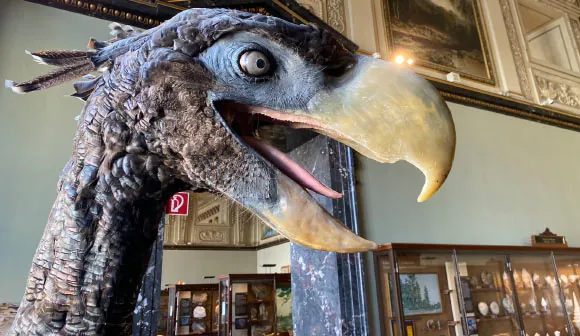
Massive Terror Bird Fossil Uncovered in Colombia: What This Means for Paleontology!
2024-11-04
Author: Daniel
Groundbreaking Discovery
In a groundbreaking discovery, paleontologists have uncovered a fossilized leg bone of a phorusrhacid bird, famously known as a Terror Bird, dating back a staggering 12 million years during the Miocene epoch in South America. This fascinating find was made in the fossil-rich Tatacoa Desert, renowned for its wealth of prehistoric artifacts.
About Terror Birds
Terror birds belong to the family Phorusrhacidae, a group of large, carnivorous, flightless birds within the order Cariamiformes. These colossal creatures were formidable predators, standing between 0.9 to 2 m (3 to 6.6 feet) tall and weighing up to 70 kg (about 154 lbs). Their adaptations included highly specialized limbs for running, enabling them to chase down prey efficiently.
Size and Significance of the Find
Dr. Siobhán Cooke, a researcher from Johns Hopkins University, explains that the size of the newly discovered bone suggests this particular Terror Bird could be the largest identified member of the species to date, estimated to be about 5 to 20% larger than previously known phorusrhacids. Noteworthy is that these ancient birds had immense, powerful beaks and robust skeletal structures, making them highly effective predators.
Historical Range
Historically, Terror Birds roamed not just South America but were also present in North America during the Plio-Pleistocene epoch and Africa in the Eocene epoch. The discovery in Colombia represents the northernmost evidence of these fearsome birds in South America, enhancing our understanding of their distribution and evolution.
Predator-Prey Interaction
Notably, the fossil exhibits probable teeth marks from Purussaurus, a massive extinct caiman that could reach lengths of up to 9 m (30 feet). This suggests a dramatic interaction between predator and prey, with Dr. Cooke hypothesizing that the Terror Bird's injuries may have ultimately led to its demise at the jaws of this giant crocodilian.
Ecosystem Diversity
This fascinating era also saw the Terror Birds coexisting with a myriad of other prehistoric fauna, including primates, giant ground sloths, and enormous armadillos known as glyptodonts, which were as large as cars. 'This ecosystem was vastly different from what we witness today or in other regions during a time when North and South America were not yet connected,' Dr. Cooke remarked.
Future Research
The research team plans to publish their findings in the esteemed journal Papers in Palaeontology, making waves in the scientific community and shedding light on one of the most captivating periods of Earth's history. This remarkable discovery not only contributes to our knowledge of Terror Birds but also paints a vivid picture of the diverse and thrilling ecosystems that once flourished on the prehistoric landscape of South America. Stay tuned for more updates on this thrilling saga of paleontological discovery!



 Brasil (PT)
Brasil (PT)
 Canada (EN)
Canada (EN)
 Chile (ES)
Chile (ES)
 España (ES)
España (ES)
 France (FR)
France (FR)
 Hong Kong (EN)
Hong Kong (EN)
 Italia (IT)
Italia (IT)
 日本 (JA)
日本 (JA)
 Magyarország (HU)
Magyarország (HU)
 Norge (NO)
Norge (NO)
 Polska (PL)
Polska (PL)
 Schweiz (DE)
Schweiz (DE)
 Singapore (EN)
Singapore (EN)
 Sverige (SV)
Sverige (SV)
 Suomi (FI)
Suomi (FI)
 Türkiye (TR)
Türkiye (TR)